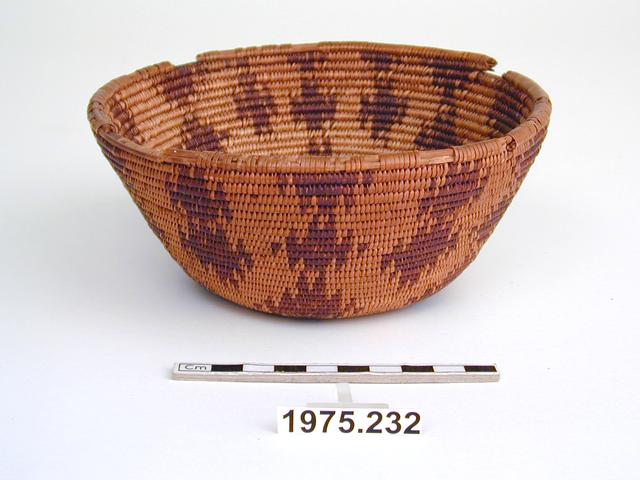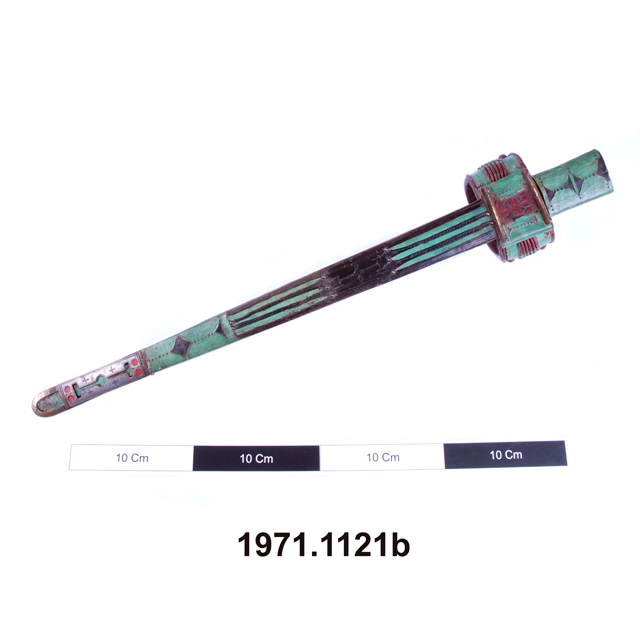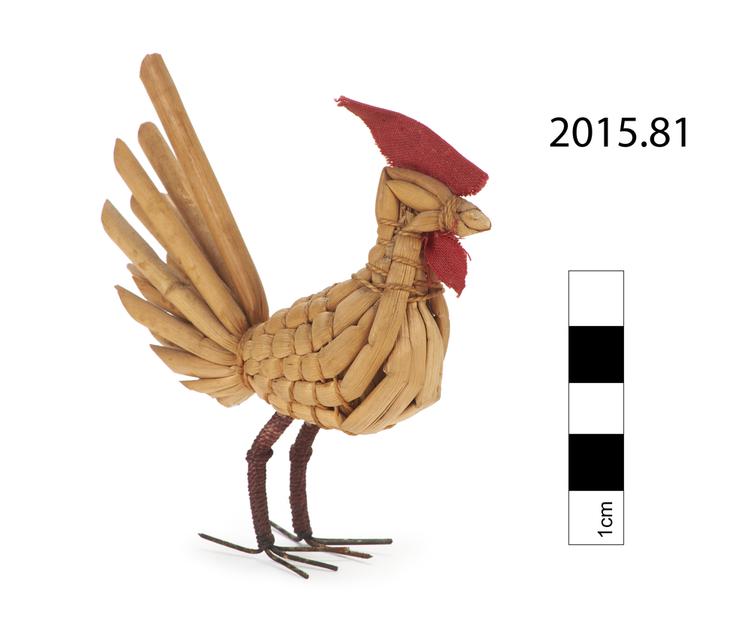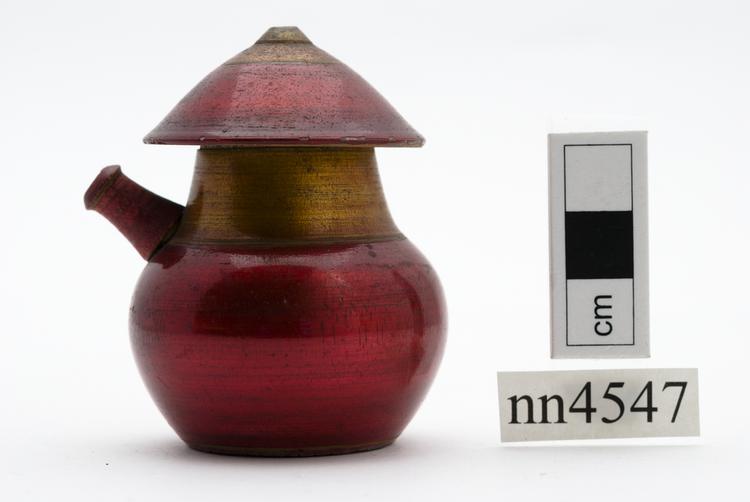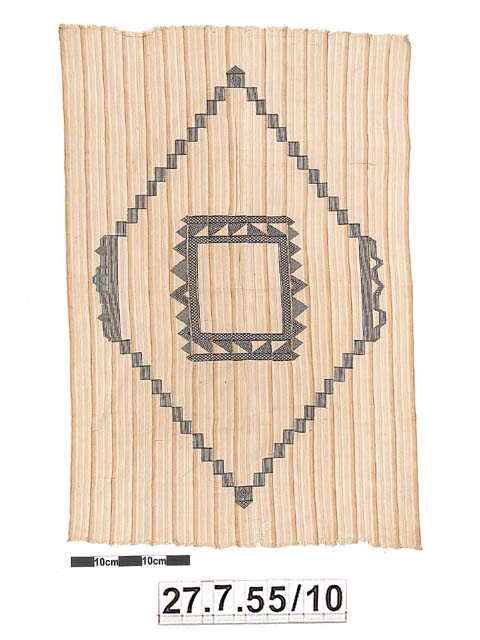
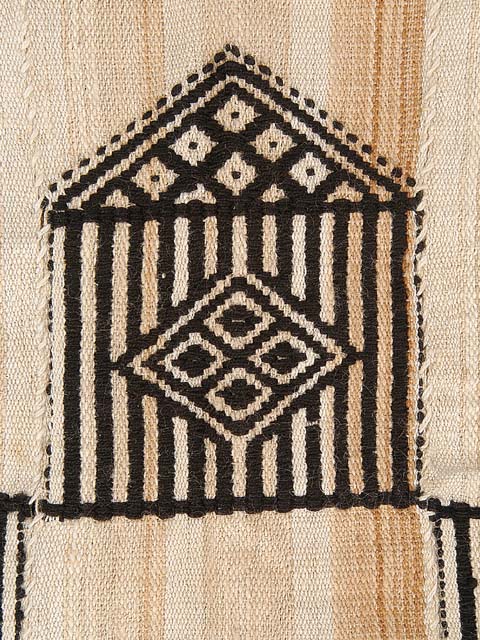
Rectangular woven cotton textile sewn together along the selvedges from 17 strips to create a wider cloth. Each strip is patterned with shaded brown, and 2 different yellow stripes, separated by cream stripes. The 2 outside ones are left plain. The other stripes are decorated with black weft patterning, creating a centre square frame and an outer diamond-shaped frame.
An example of Sierra Leonean country cloth, of the kpokpo type. These thick heavy textiles were traditionally made from locally grown cotton, collected by women and spun into thread and dyed by men. Men were also the main weavers, and would have used a tripod loom to create a series of strips which were then sewn together edge to edge to create a larger cloth with a more complex pattern. County cloths have been recorded as being used as trade items, worn as part of elite ceremonial dress, as well as burial shrouds (plain white).



